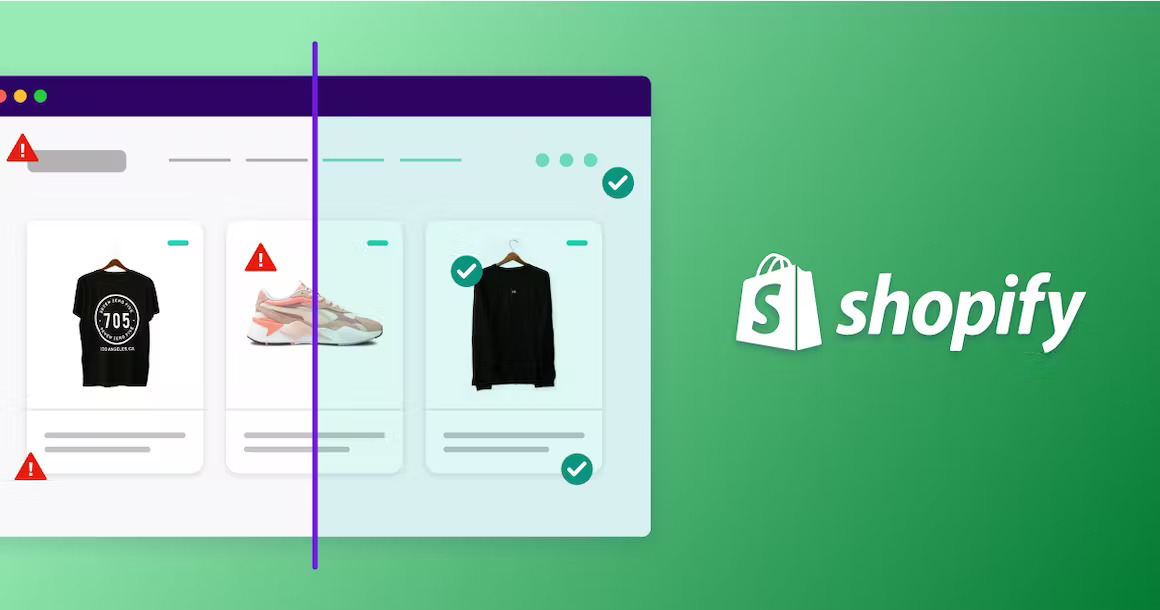There has been a wave of concern sweeping through the digital space because of the increase in lawsuits against websites that aren’t ADA compliant. Could your Shopify store be next?
In this article, we take you through the basics of ADA and explore how you can make sure your Shopify store is ADA compliant.
What is the ADA?
The American Disabilities Act is “a civil rights law that prohibits discrimination against individuals with disabilities in all areas of public life, including jobs, schools, transportation, and all public and private places that are open to the general public.”
As an example, here’s an excerpt from ADA in regard to parking: “An accessible parking space must have an access aisle, which allows a person using a wheelchair or other mobility device to get in and out of the car or van.”
But unlike parking lots, there are no specific laws detailing how a website should adhere to the ADA. Currently, the Web Content Accessibility Guidelines act as the de facto basis for a website’s ADA compliance.
Websites and mobile apps are considered “public accommodations” under ADA
Does ADA compliance really apply to digital spaces, like websites? How can that be?
Well, judges in two cases determined that websites and mobile apps are still subject to ADA compliance. The first case was Gil v. Winn Dixie. Judge Scola stated that if “a website is heavily integrated with physical store locations and operates as a gateway to the physical store locations,” it is a public accommodation and therefore under ADA.
The second case was Robles v. Domino’s Pizza, where the panel summarized that “the ADA applies to the services OF a public accommodation” and that “the website and app-connected customers to the goods and services of Domino’s physical restaurants.” So, Domino’s website and mobile app were expected to comply with the ADA.
Based on these two cases, websites and mobile apps are considered either public accommodation or services of a public accommodation which is both under Title III of the ADA.
In other words, if a website is an extension of an entity that serves the public (like a restaurant or store), then it has to follow the rules set out by the ADA and the Web Content Accessibility Guidelines.
Laws and Guidelines that support the ADA
The CVAA (21st Century Communications and Video Accessibility Act) was signed by President Obama in 2010 to make sure that “accessibility laws enacted in the 1980s and 1990s are brought up to date with 21st-century technologies, including new digital, broadband, and mobile innovations.”
The W3C WAI (World Wide Web’s Consortium Website Accessibility Initiative) created the WCAG (Web Content Accessibility Guidelines) which made it clearer how to make websites accessible for people with disabilities.
According to the WCAG 2.1 “At a Glance” section, for a website to be considered “accessible,” it must adhere to four principles: Perceivable, Operable, Understandable, and Robust. But what do these principles look like in practice? Don’t worry, we’ll get into the details in a little bit.
But for now, just know that even though the WCAG is only a set of guidelines, not regulations nor laws, the court still uses the WCAG to determine the ADA compliance of a website.
Also, even with all these guidelines, there are still some aspects not explicitly stated. Usually, it’s these gray areas that become the catalyst for lawsuits.
What happens when ADA lawsuits against websites are launched?
Big companies such as Amazon, Burger King, and Hulu were sued for having non-compliant websites. Most of these lawsuits are either settled privately or dismissed.
However, as we’ve mentioned earlier, Winn Dixie’s and Domino’s cases actually went to court. And these high-profile losses could open the floodgates of lawsuits even further. Partly, that’s because those cases reaffirmed that websites and mobile apps are subject to the ADA.
In general, ADA lawsuits against websites can be handled by settlements or litigation. If fought in court, the plaintiff cannot be compensated for damages. Only attorney fees can be paid out. But if you go to court, it’s likelier to bring about the negative press for your company.
Bottom line? It’s best to make your website ADA compliant as soon as possible. It is likely that you’ll face a lawsuit at some point (if you are not yet compliant). Just last year, there were 2200 cases against websitesthat weren’t ADA compliant.
Also, if you get caught with a non-ADA-compliant Shopify store, you’ll have to rush to get those fixes in. Aside from the attorney fees you’ll be paying, that will cost a lot more money than introducing ADA compliant changes to your website over time, with regular maintenance and updates.
How do I make my Shopify Store ADA Compliant?
The main argument that compels websites and mobile apps to be in compliance with ADA is that if a website is connected to a physical store, then it’s subject to the same rules. So you might be wondering, What if I’m totally e-commerce?
Currently, the courts are considering the “broad mandate” of the Title III of ADA, which is to ensure that people with disabilities have the same access to goods and services as those people without disabilities. That would mean that if you sell something–whether it’s strictly through a website or through a brick-and-mortar store (or a combo)–your website must be ADA compliant.
Bottom line? We recommend website ADA compliance whether you have a physical store or not. Compliance not only helps you avoid lawsuits, but it also promotes equality for those with limited physical capabilities.

